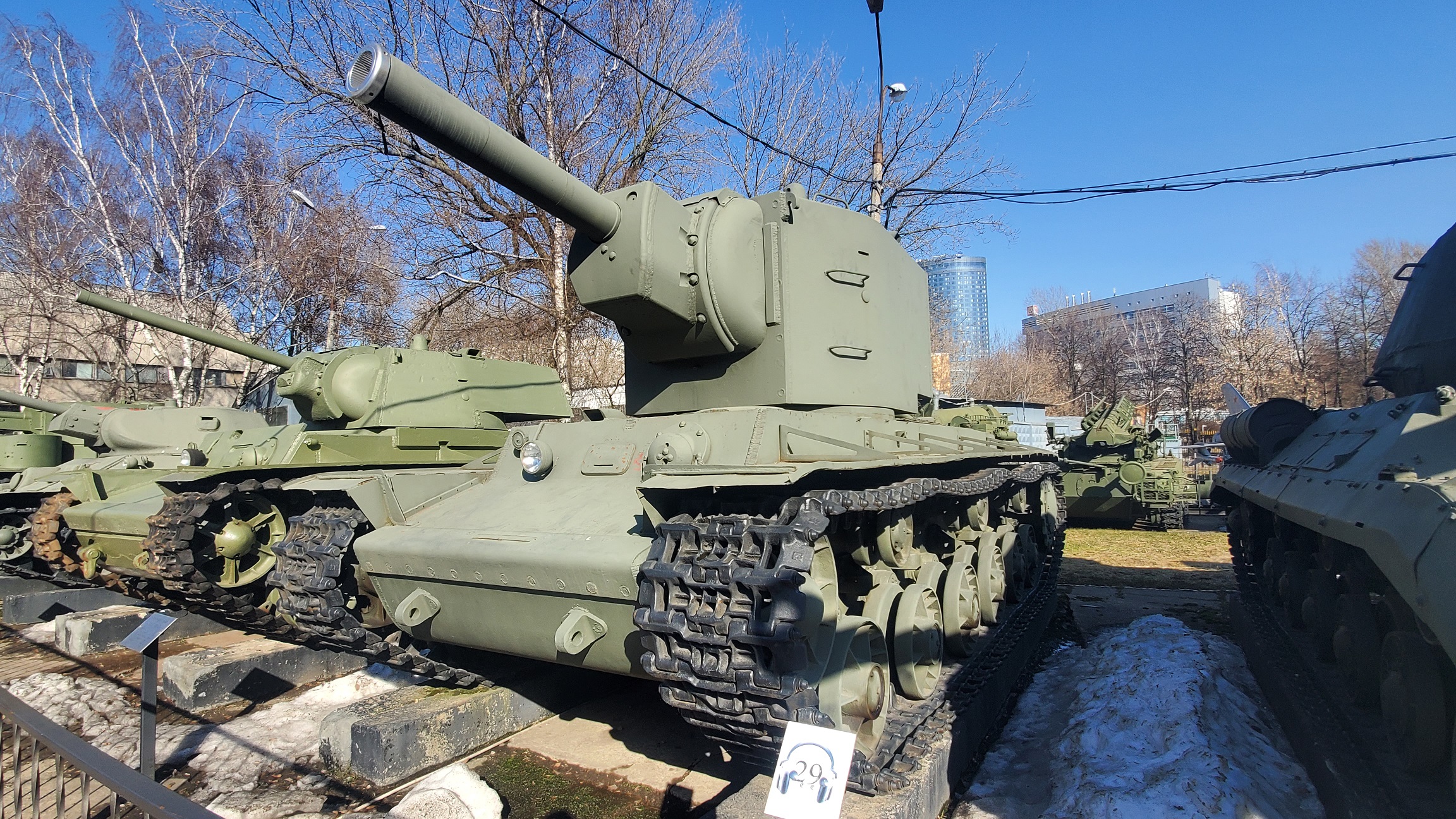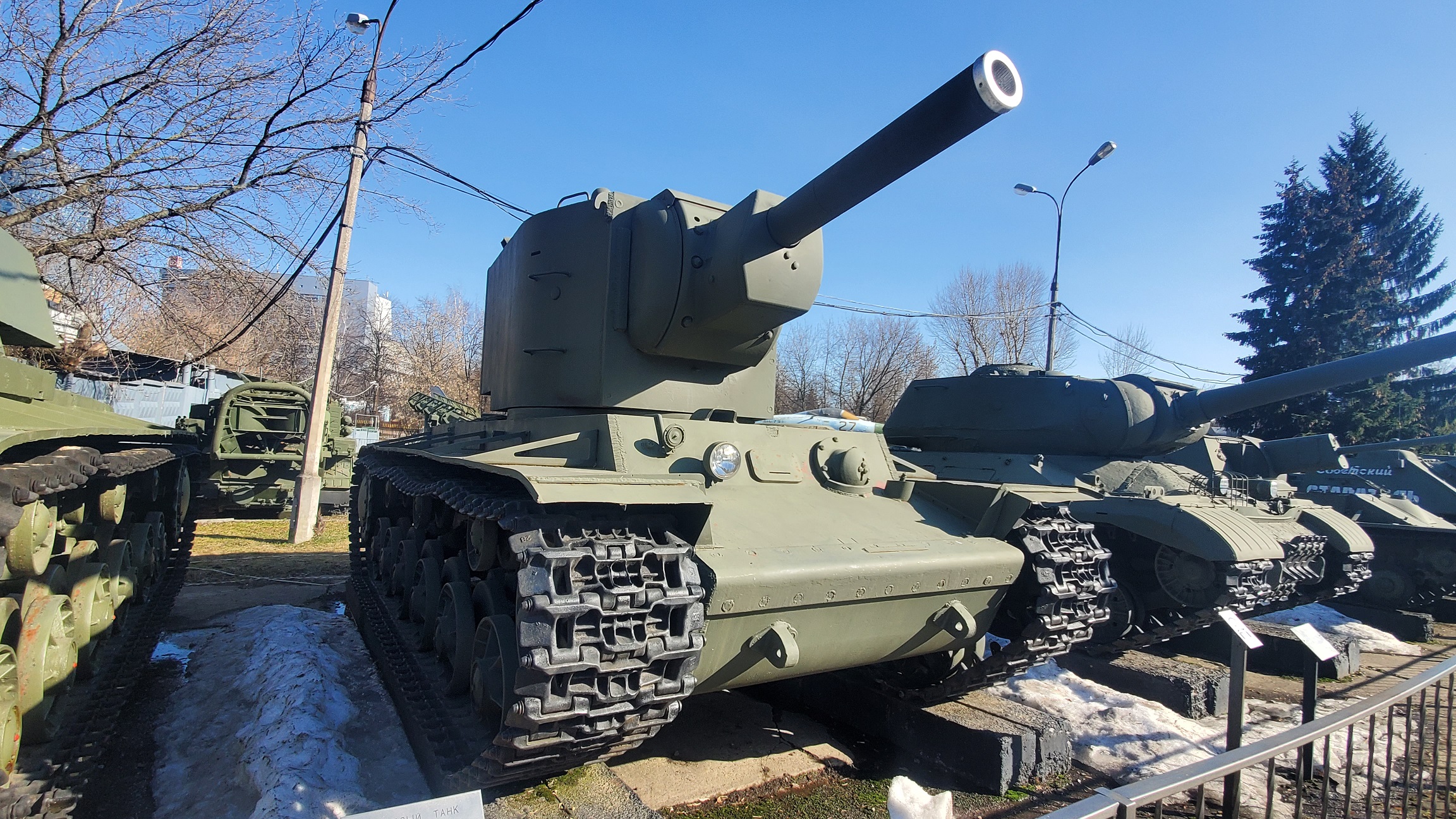KV-2 Heavy Soviet Assault Gun
The KV2 is a Soviet heavy assault tank of the initial period of WW2. The abbreviation KV means “Klim Voroshilov” – the official name of the serial Soviet heavy tanks produced in 1939-1943, named after the hero of the Civil War in Russia, military and political figure Voroshilov Kliment Yefremovich.
This vehicle was developed by the design bureau  of the Leningrad Kirov Plant (LKZ) in January 1940 in connection with the urgent need of a well-protected tank with powerful weapons to fight the fortifications of the Mannerheim Line during the Soviet-Finnish War of 1939— 1940.
of the Leningrad Kirov Plant (LKZ) in January 1940 in connection with the urgent need of a well-protected tank with powerful weapons to fight the fortifications of the Mannerheim Line during the Soviet-Finnish War of 1939— 1940.
The armored hull of the tank was welded from rolled armor plates with a thickness of 75, 40, 30 and 20 mm. Equal strength armor protection (armor plates with a thickness different from 75 mm were used only for horizontal armoring of the vehicle), anti-cannon-proof. The armored plates of the front of the vehicle were installed at rational angles of inclination. At the same time, the first 24 KV-2 tanks differed from the rest of the vehicles in the shape of the turret and the configuration of the gun mantlet. The later “lowered” turret had a lower mass, which made it possible to lighten the already overloaded chassis. Outwardly, these two types of towers are easily distinguishable by their frontal end: the MT-1 installation has inclined zygomatic armor plates, and the “lowered” version has vertical ones. Both turret options were welded from rolled armor plates, their armor thickness was 75 mm.
The driver-mechanic was located in the center in front of the tank’s armored hull, to the left of him was the radio operator’s workplace. Four crew members were located in the turret: to the left of the gun were the gunner’s and loader’s seats, and to the right were the tank’s commander and loader’s assistant. The landing and exit of the crew were made through the aft door of the tower and two round hatches: one in the tower in the place of the commander and one in the hull in the place of the gunner-radio operator. The hull also had a bottom hatch for emergency escape by the crew of the tank and a number of hatches, hatches and technological holes for loading ammunition, access to the necks of fuel tanks, and other components and assemblies of the vehicle.


Armament
The KV-2 tank was equipped with a 152-mm tank howitzer mod. 1938/40 (M-10T) tank version of the 1938 model field howitzer (M-10). The M-10T howitzer was mounted on trunnions in the turret and was completely balanced, but the turret with the M-10T gun was not balanced: its center of mass was not located on the geometric axis of rotation. As a result, the standard electric motor of the turret traverse drive, even with a slight roll of the machine, did not cope with its task. The M-10T howitzer had vertical guidance angles from −3 to + 18 °, with a fixed turret position, it could be guided in a small horizontal guidance sector (the so-called “jewelry” guidance). The shot was fired by means of a manual mechanical trigger.
The ammunition load of the gun was 36 separate loading rounds. The shots ( shells and propelling charges in the casings ) were stacked in the turret and along both sides of the fighting compartment. Compared to the wide range of ammunition for the 152 mm M-10 howitzer, the standard KV-2 ammunition was limited to only one type of ammunition:
- high-explosive high-explosive steel howitzer grenade OF-530 weighing 40 kg (explosive mass – TNT or ammotol – from 5.47 to 6.86 kg) and a special charge obtained from the standard charge Zh-536 of the towed M-10 howitzer by removing several equilibrium bunches of gunpowder.














